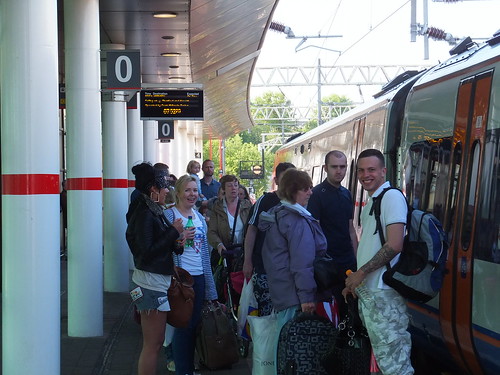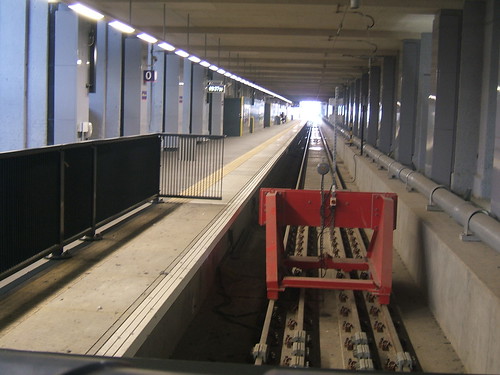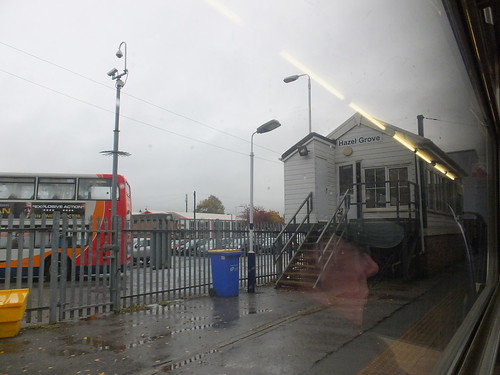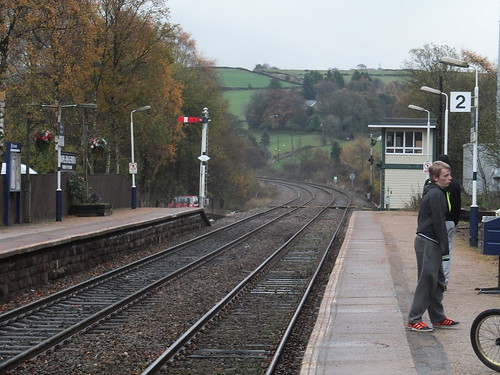After my partner, Daemon, passed away in 1999 I decided it was time I saw a little more of the world, before age, infirmity or poverty precluded such jaunts.
I've finally got around to listing these overseas trips in date order, with links to the blog posts which give a little more detail. Generally, each blog post has links to sets of photographs relevant to that post.
Earlier trips overseas are listed in a separate post Jan Ford's Travels - The early trips.
There's also a post Jan Ford's Travels: Around the World in pictures with a list of counties visited and links to a list of collections of pictures for each country.
As an alternative, you can also find photographs of my trips by going to the list of collections here, where collections for each country visited are listed in alphabetical order (followed by 'special interest' collections on railways, charitable initiatives and similar).
Round the World 1 (December 2001)
Thailand (Bangkok), Australia (Sydney), New Zealand (Auckland), Fiji (Nadi), United States (San Francisco). There's a short report here.
Republic of Ireland (2002)
I visited Galway to spend some time with my friend Rita who was examining students.
China (2002)
I visited Beijing, Xian, Chungking, then took a Yangtse Cruise. There's an incomplete report here.
Germany, Poland (September 2003)
I made a trip Wolsztyn with my friend Mike Edwards (now, alas, passed on) to take the Wolsztyn locomotive driving experience. We spent a fascinating day in Berlin on the way. There's a short report here. My pictures are here.
Hong Kong, China, Macau (2004)
I made a trip to Hong Kong in late 2004, meeting up with my friend Rita who was examining students. We managed a day trip to Macau and a day trip to Guangzhou in southern China. There's a short post here. My pictures are here.
Canada (July 2004)
My trip to Canada (Toronto) is described here.
Round the World 2 (January 2005)
Brazil (Rio de Janeiro), Peru (Cuzco, Machu Picchu, Lima), United States (Los Angeles, Hawaii), New Zealand (Christchurch, Greymouth, Franz Josef), Singapore (Raffles Hotel), Egypt (Giza). There's a report here.
Far East 1 (June 2005)
Vietnam (Ho Chi Min City and Mekong Delta), Cambodia (Siem Reap, Angkor Wat), Thailand (Bangkok, Ayutthaya), Taiwan (Tai Pei, Hualien, Taroko Gorge). One report here describes this trip.
Ukraine (2005)
In late 2005, I joined Mike again for another steam driving experience at Kolomiya. There's a short report here.
Round the World 3 (February 2006)
Mexico (Mexico City, Tlaxcala), Ecuador (Quito, Galapagos), Chile (Santiago), French Polanesia (Papeete), Australia (Melbourne, Perth), Hong Kong, India (Delhi, Udaipur, Shimla). There's a more detailed report here.
Round the World 4 (February 2007)
United States (New York), Argentina (Buenos Aires, Ushuaia), Antarctic Peninsula ('Antarctic Dream' cruise), Chile (Santiago), New Zealand (Auckland), Australia (Perth), South Africa (Johannesburg, Cape Town). A total of 31 reports describe this trip. Click here to select them all.
Japan (September 2007)
Japan (Tokyo, Nagoya, Kyoto, Miyajima). A total of 16 reports describe this trip. Click here to select them all.
Round the World 5 (March 2008)
Union of Myanmar (Yangon,'Road to Mandalay'), Thailand (Bangkok), United States (Las Vegas), Mexico (Chichen Itza), Cuba (Havana, Trinidad), Panama (Panama City)
A total of 29 reports describe this trip. Click here to select them all.
Far East 2 (September 2008)
Thailand (Bangkok, Golden Triangle), Myanmar (Yangon, Mandalay, Inle Lake, Kakku), Laos (Luang Say Cruise, Luang Prabang, Vientiane), Dubai (Al Maha). A total of 22 reports describe this trip. Click here to select them all.
Germany (2009)
I visited Frankfurt and Mannheim in January 2009. My pictures are here.
Middle East 1 (March 2009)
Egypt (Cairo, 'Zahra' Nile cruise, Abu Simbel), Jordan (Amman, Dead Sea, Petra, Aqaba). A total of 21 reports describe this trip. Click here to select them all.
Far East 3 (August 2009)
Thailand via Mumbai (Bangkok), Myanmar (Yangon, 'Road to Mandalay' cruise), India (Kolkata), Bhutan (Thimphu, Gangtey, Punakha, Paro). A total of 27 reports describe this trip. Click here to select them all.
Far East 4 (March 2010)
Indonesia, Java (Borobudur, Yogjakarta), Indonesia, Bali (Sanur), Malaysia, Sarawak (Kuching, 'Orient Pandaw' cruise), Malaysia, Sabah (Kota Kinabalu), Malaysia (Kuala Lumpur). A total of 25 reports describe this trip. Click here to select them all.
Norway and the Arctic (August 2010)
Norway ('Prince Albert II' cruise). A total of 13 reports describe this trip. Click here to select them all.
Far East 5 (August 2010)
Myanmar ('Road to Mandalay' Bhamo cruise, Yangon), Thailand (Bangkok). A total of 12 reports describe this trip. Click here to select them all.
Trip to St. Helena (April 2011)
South Africa (Capetown), cruise to St. Helena, cruise to Ascension. A total of 7 reports describe this trip. Click here to select them all.
Trip to Russia (July 2011)
Russia ('AMA Katerina' Moscow - St. Petersburg cruise). A total of 19 reports describe this trip. Click here to select them all.
Trip to Burma (October 2011)
Myanmar (Yangon, Mount Popa, 'Road to Mandalay' cruise), Thailand (Bangkok). A total of 11 reports describe this trip. Click here to select them all.
Safari (February 2012)
South Africa (Johannesburg), Zambia (Livingstone), Zimbabwe, Botswana, Namibia ('Zambesi Queen' cruise), Botswana (Duba Plains, Savuti, King's Pool, Vumbura Plains, Maun). A total of 28 reports describe this trip. Click here to select them all.
Trans-Siberian (July 2012)
Mongolia (Ulaan Baatar), Russia ('Golden Eagle' private train). A total of 17 reports describe this trip. Click here to select them all.
Burma (September 2012)
Myanmar (Yangon, Mawlamyine, Pa-An, Mount Popa, 'Road to Mandalay' Bhamo cruise), Thailand (Bangkok). A total of 21 reports describe this trip. Click here to select them all.
Malta (November 2012)
Malta (Radisson BLU Resort & Spa, Golden Sands). A total of 8 reports describe this trip. Click here to select them all.
Far East 6 (January 2013)
Vietnam (Ho Chi Min City Airport, Hoi An, Hue, Hanoi, 'Indochina Sails' Halong Bay cruise), Australia (Perth), Thailand (Bangkok Airport), Myanmar (Yangon, Old Bagan, Mandalay, Naypyidaw). A total of 25 reports describe this trip. Click here to select them all.
China and Tibet (July 2013)
China (Xining, QingHai-Tibet Railway, Lhasa, Shigatse, Gyangtse, Shanghai). A total of 17 reports describe this trip. Click here to select them all.
Trip to Burma (April-May 2014)
Burma (Yangon, Mawlamyine, Ko Dut, Bagan, Mandalay, Mrauk U)
Qatar (Doha)
A total of 21 reports describe this trip. Click here to select them all.
Trip to Vienna (November 2014)
Austria (Vienna)
Four reports describe this trip. The first report is here, with links to subsequent reports.
Trip to Singapore, Papua New Guinea, Indonesia, Malaysia (January-February 2015)
A cruise on 'Caledonian Sky' "from the Coral Sea to the South China Sea". A total of 22 reports describe this trip. Click here to select them all.
Trip to Burma (April-May 2015)
Burma (Yangon, Mawlamyine, Ko Dut, Setse Beach, Bagan, Mandalay, Putao)
A total of 20 reports describe this trip. Click here to select them all.
South Atlantic Voyage (February-March 2016)
Argentina (Buenos Aires, Ushuaia), Falklands (Steeple Jason Island, West Point Island,East Falkland), South Georgia, Tristan da Cunha (Tristan, Nightingale Island), South Africa (Cape Town, Robben Island).
A total of 19 reports describe this trip. Click here to select them all.
Trip to Burma (April-May 2016)
Burma (Yangon, Mawlamyine, Ko Dut, Bagan, Thazi, Kalaw, Kawthaung, Mergui Archipelago)
A total of 25 reports describe this trip. Click here to select them all.
Chilean Fjords and Antarctic Peninsula Cruise (November-December 2016)
Chile (Santiago, Valparaiso, Valdivia, Punta Arenas, Cape Horn, Antarctica (South Shetland Islands, Antarctic Peninsula), Argentina (Ushuaia, Buenos Aires), Brazil (Iguazzu).
A total of 22 reports describe this trip. Click here to select them all.
Burma and Australia (April-May 2017)
Burma (Yangon, Dawei, Ko-Dut, Mawlamyine, Bagan Medical Clinic, Loikaw, Kalaw, Inle Lake)
A total of 24 reports describe this trip. Click here to select them all.
Australia (Perth, Melbourne, Hobart)
A total of 10 reports describe this trip. Click here to select them all.
Burma (September-October 2017)
Burma (Yangon, Myitkyina, Lonton, Mandalay, 'Road to Mandalay')
A total of 20 reports describe this trip. Click here to select them all.
Burma and Nepal (April-May 2018)
Burma (Yangon, Ko-Dut, Mawlamyine, Bagan Medical Clinic, Sel-Taw-Oo Monastery, Rith Lake, Kalay, Pyin Oo Lwin)
A total of 23 reports describe this trip. Click here to select them all.
Nepal (Kathmandu, Pokhara)
A total of 6 reports describe this trip. Click here to select them all.
Caspian Odyssey (September 2018)
Armenia (Yerevan, Geogard, Garni, Lake Sevan, Dilijan), Georgia (Tbilisi, Kakheti, Signagi, Gori, Uplistsikhe,Mtskheta), Azerbaijan (Baku) by train
A total of 11 reports describe this trip. Click here to select them all.
Turkey (September 2018)
Istanbul
A total of 4 reports describe this trip. Click here to select them all.
Burma (May 2019)
Burma (Yangon, Mon State, Kayin State, Bagan, Kayah State, Shan State, Mandalay, Pyin Oo Lwin)
A total of 16 reports describe this trip. Click here to select them all.
Tropic of Capricorn (February 2020)
New Zealand, Norfolk Island, Vanuatu, Papua New Guinea, Australia
A total of 17 reports describe this trip. Click here to select them all.
[Additional trips added 10-Dec-2013: Trips in 2014 added 26-Dec-2014: Trips in 2015 and link to 'Around the world in pictures' post added 12-Oct-2015: 2016 Trips added 16-Jan-2017: 2017 trips added 28-Nov-2017: Burma-2018 and Nepal added 19-Jun-2018: Caspian Odyssey and Istanbul trips added 19-Jan-2020: Tropic of Capricorn added 30-Decc-2020]






